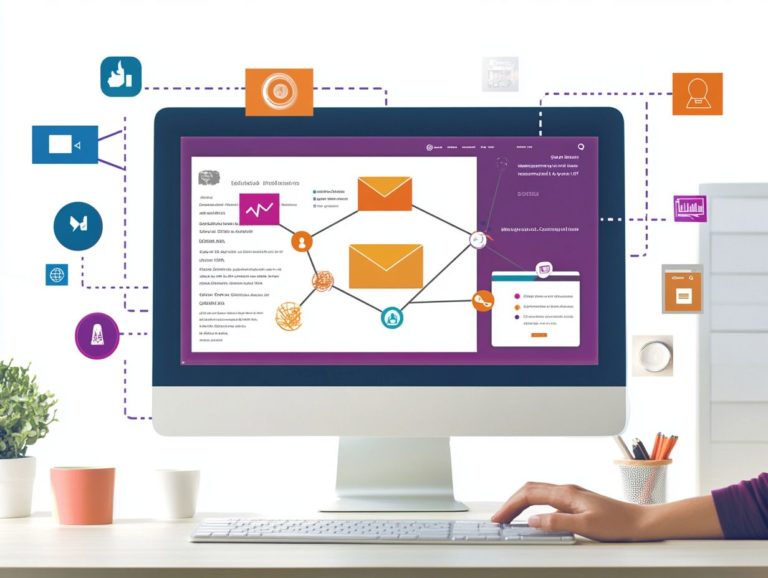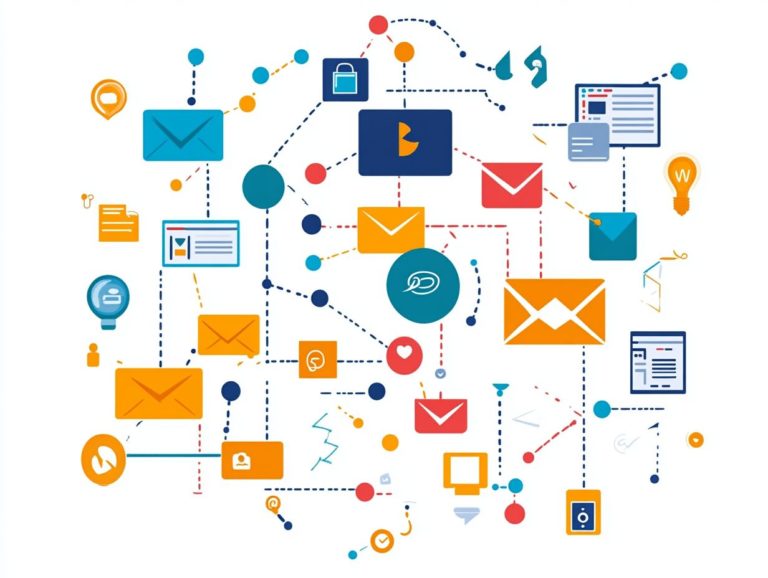How to Handle Email Unsubscribes
Let's Set Up Your Lead Generation Strategy
Fill out the form below, and our team will get in touch with you to create a tailored solution for your business.
In the fast-paced realm of digital marketing, grasping the nuances of email unsubscribes is essential for preserving a robust subscriber list.
This article delves into the meaning of unsubscribing, examines the common reasons behind a subscriber’s decision to opt out, and offers best practices for managing this sensitive process.
Uncover strategies that will keep your audience engaged and learn how to personalize your emails to minimize unsubscribes.
By skillfully managing opt-outs, you can elevate your email marketing efforts and cultivate enduring connections with your audience.
Contents
- Key Takeaways:
- Understanding Email Unsubscribes
- Reasons for Unsubscribes
- Let's Set Up Your Lead Generation Strategy
- Best Practices for Handling Unsubscribes
- Let's Set Up Your Lead Generation Strategy
- Strategies for Reducing Unsubscribes
- Let's Set Up Your Lead Generation Strategy
- Frequently Asked Questions
- 1. What is an email unsubscribe and why is it important to handle it?
- 2. How can I make it easy for recipients to unsubscribe from my emails?
- 3. Can I manually handle email unsubscribes?
- 4. What should I do if a recipient unsubscribes but continues to receive my emails?
- 5. Is it possible to re-subscribe a recipient who has previously unsubscribed?
- 6. How can I prevent high unsubscribe rates in the first place?
Key Takeaways:
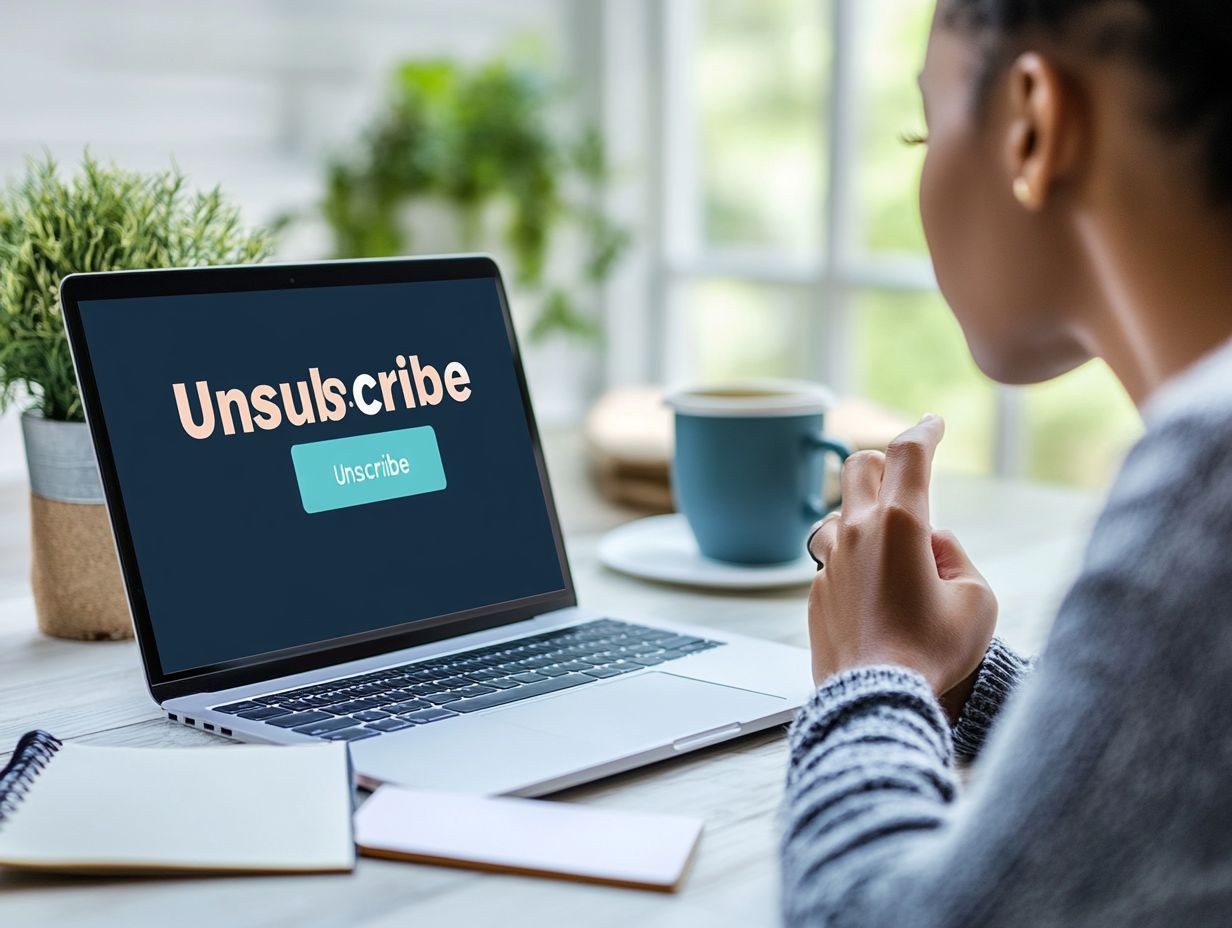
- Understand the importance of email unsubscribes and how they can impact your email marketing efforts.
- Make the process of unsubscribing easy for subscribers to reduce negative feedback and maintain a positive brand image.
- Implement strategies to keep subscribers engaged and personalize emails to reduce the likelihood of unsubscribes.
Understanding Email Unsubscribes
Grasping the nuances of email unsubscribes is essential for brands aiming to refine their email marketing strategies and elevate user experience.
A seamless unsubscribe process respects your choices and keeps you compliant with key laws like GDPR and the CAN-SPAM Act.
Diving into unsubscribe metrics reveals valuable insights into customer behavior, enhances engagement rates, and ultimately minimizes spam complaints, all while retaining your most engaged subscribers.
What is an Email Unsubscribe?
An email unsubscribe is the process you engage in when you decide to stop receiving further marketing messages from a brand. This important action not only respects your preferences but also enhances your overall user experience.
To effectively communicate the unsubscribe process, brands should ensure that this option is easily accessible and prominently displayed, typically found in the footer of every email.
By providing a straightforward unsubscribe link, brands give you control over your inbox without any hassle.
It’s essential that this option comes with a brief explanation, reassuring you that your choice will be honored promptly and without repercussions.
By respecting your preferences and offering an effortless way to unsubscribe, brands can cultivate a more positive relationship with you, enhancing brand loyalty in the long run.
Reasons for Unsubscribes
Understanding the reasons behind email unsubscribes is crucial for refining your email marketing strategies and enhancing customer retention.
Subscribers often unsubscribe for several reasons. These include irrelevant content, too many emails, or negative experiences leading to spam complaints.
Let's Set Up Your Lead Generation Strategy
Fill out the form below, and our team will get in touch with you to create a tailored solution for your business.
By collecting customer feedback and analyzing email performance metrics, you can identify the root causes of these issues and adjust your communications to better align with your subscribers’ needs.
Common Reasons for Unsubscribes
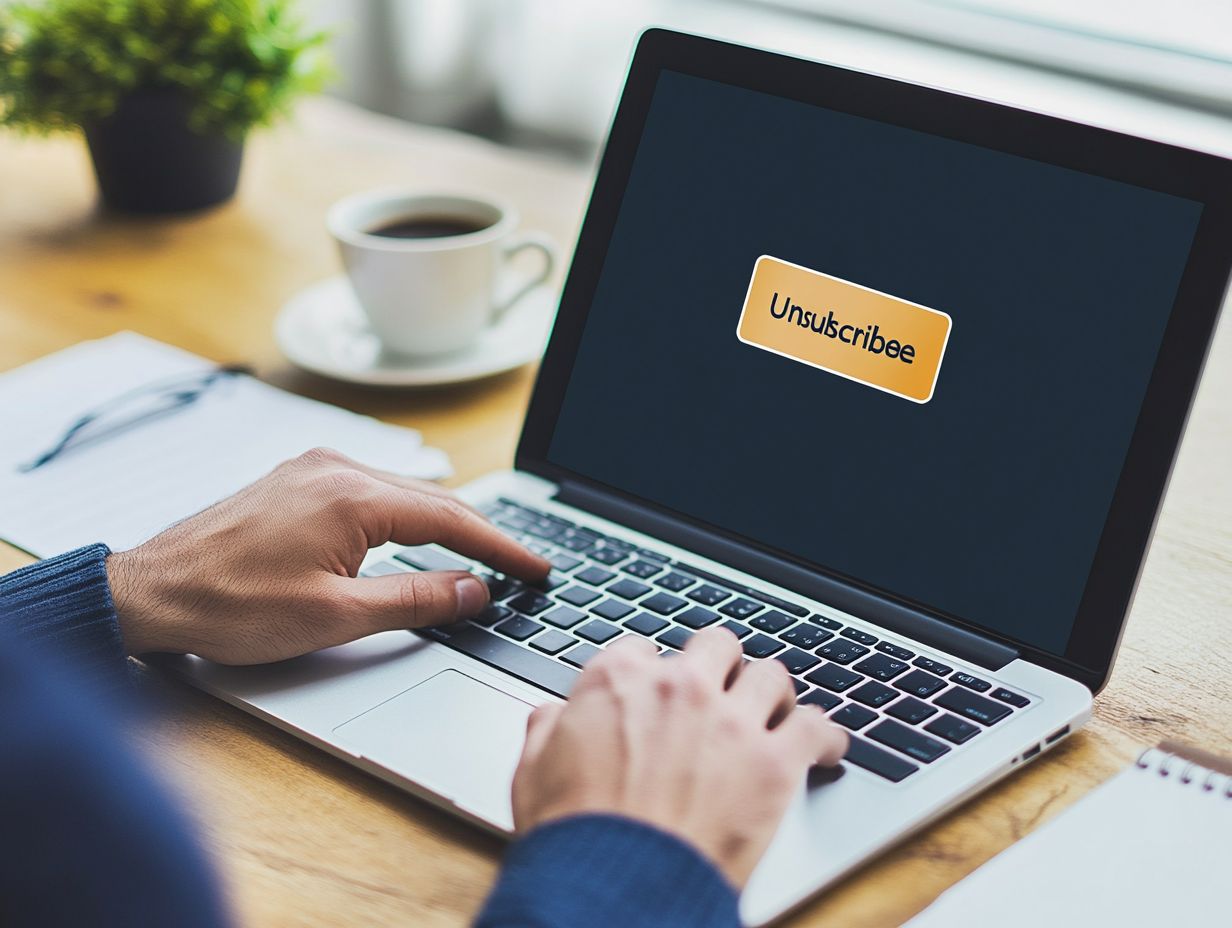
Common reasons for email unsubscribes often stem from receiving too many promotional emails, irrelevant content, or what subscribers perceive as spam, leading to a noticeable decline in engagement rates.
These factors can greatly affect your brand’s ability to communicate effectively with your audience.
For example, studies show that 78% of recipients cite the volume of emails as their primary reason for opting out, underscoring the need for you to reassess your email frequency.
When subscribers consistently receive content that doesn t align with their interests like updates about products they have no intention of purchasing a disconnect arises, inevitably driving up those unsubscribe rates.
Understand your customers’ preferences to customize your campaigns and keep your subscriber list healthy.
It s crucial to implement segmentation strategies and leverage analytics to analyze engagement patterns, ensuring that relevant content reaches the right audience.
Best Practices for Handling Unsubscribes
Implementing best practices for managing unsubscribes is crucial for you to maintain strong customer relationships. It also ensures compliance with regulations such as GDPR and the CAN-SPAM Act. A seamless unsubscribe process not only honors customer feedback but also fosters healthier email marketing communications.
By offering straightforward unsubscribe links and actively engaging with feedback, you can elevate your brand s reputation and refine your overall email strategy.
How to Make the Process Easy for Subscribers
Making the unsubscribe process easy for subscribers is essential for enhancing their experience and maintaining a strong brand reputation.
When subscribers come across a straightforward and intuitive method to opt out of communications, frustration and dissatisfaction tend to vanish. Start creating a better experience with clear and simple instructions that effectively guide them through each step of the process.
By minimizing the number of clicks required to unsubscribe, brands can significantly reduce the chances of subscribers feeling discontent. A simple confirmation step ensures they fully understand their choice, fostering transparency.
Ultimately, a seamless unsubscribe experience not only respects preferences but also positively impacts the overall email strategy. This can lead to improved subscriber retention and even open doors for potential re-engagement opportunities in the future.
How to Handle Negative Feedback
Handling negative feedback from subscribers is crucial for refining your email marketing strategies and maintaining high engagement rates.
Let's Set Up Your Lead Generation Strategy
Fill out the form below, and our team will get in touch with you to create a tailored solution for your business.
By carefully looking at email performance data related to complaints, you can identify specific issues that may lead to dissatisfaction. This includes examining unsubscribe rates and responses to surveys in addition to just open rates and click-through rates.
Fostering open communication with subscribers is essential. Encourage them to voice their concerns. Adapting your email content based on their feedback not only enriches their overall experience but also builds trust, demonstrating that their opinions truly matter.
Ultimately, adopting a proactive approach in these interactions can enhance subscriber loyalty and cultivate a more engaged audience.
Strategies for Reducing Unsubscribes
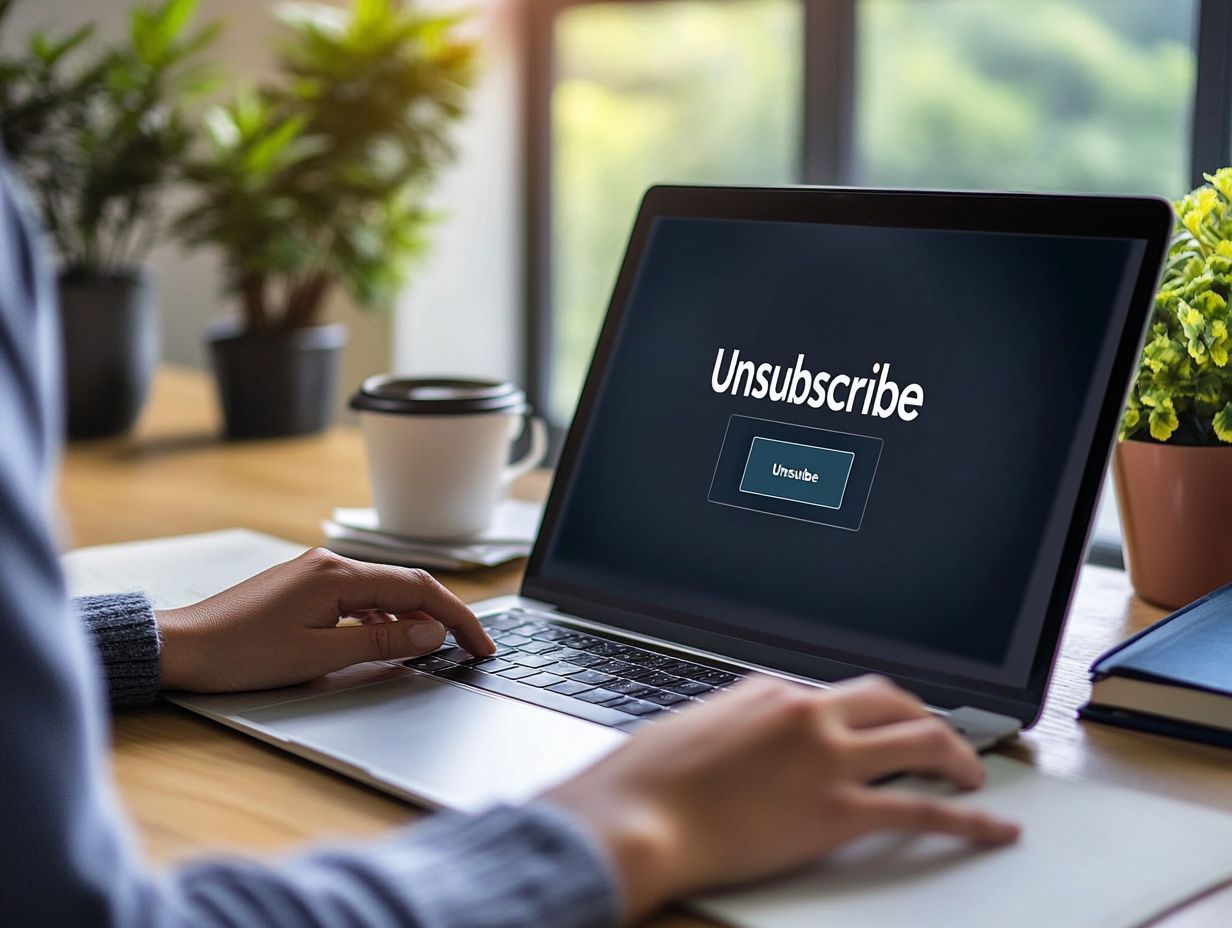
Implementing effective strategies to reduce unsubscribes can greatly enhance your engagement and elevate your email marketing strategy. By concentrating on personalized content and tailoring your marketing campaigns to align with customer preferences, you can cultivate stronger relationships with your email subscribers.
This, in turn, will lead to significantly higher retention rates, ensuring that your audience remains invested in what you have to offer.
Ways to Keep Subscribers Engaged
Keeping your subscribers engaged is vital for the success of any email marketing campaign. Engaged subscribers are far less likely to hit that unsubscribe button.
To foster this engagement, consider employing strategies like segmentation. This technique lets you tailor your messages based on subscribers’ preferences and behaviors. By delivering personalized content that truly resonates with their individual interests, you can cultivate a more meaningful connection.
Regularly collecting feedback helps you improve your offerings and address any emerging concerns. Monitoring email metrics is equally essential.
By tracking open rates, click-through rates, and conversion rates, you gain valuable insights into how engaged your audience is. This data-driven approach enables you to make timely adjustments to your strategies, ensuring your content remains relevant and appealing to your subscribers.
How to Personalize Emails to Reduce Unsubscribes
Personalizing your emails works wonders for reducing unsubscribes and boosting overall engagement! By using subscriber data, you can craft messages that resonate more powerfully, making recipients feel truly valued and understood.
Techniques like segmenting your audience based on past purchase behavior or engagement levels enable you to run targeted campaigns that address individual needs directly.
Incorporating changing content such as product recommendations or personalized greetings further enhances this tailored approach. The significance of personalization cannot be overstated; it’s essential for retaining email subscribers while enriching their experience. This ultimately fosters long-term loyalty and satisfaction.
The Importance of Managing Unsubscribes Effectively
Effectively managing unsubscribes is crucial for maintaining compliance with email regulations and understanding your customers’ feedback.
A well-structured unsubscribe process helps you adhere to legal requirements and shows respect for the recipient’s preferences. By creating an intuitive and straightforward unsubscribe experience, you foster trust and demonstrate that you value your customers’ time and choices.
Let's Set Up Your Lead Generation Strategy
Fill out the form below, and our team will get in touch with you to create a tailored solution for your business.
This proactive approach can significantly reduce spam complaints and lead to a healthier email list overall.
When you analyze unsubscribe patterns, you gain valuable insights into customer behavior and preferences. This enhances your ability to tailor future communications and strengthens your customer relationships, ensuring that only engaged recipients remain in your mailing list.
Frequently Asked Questions
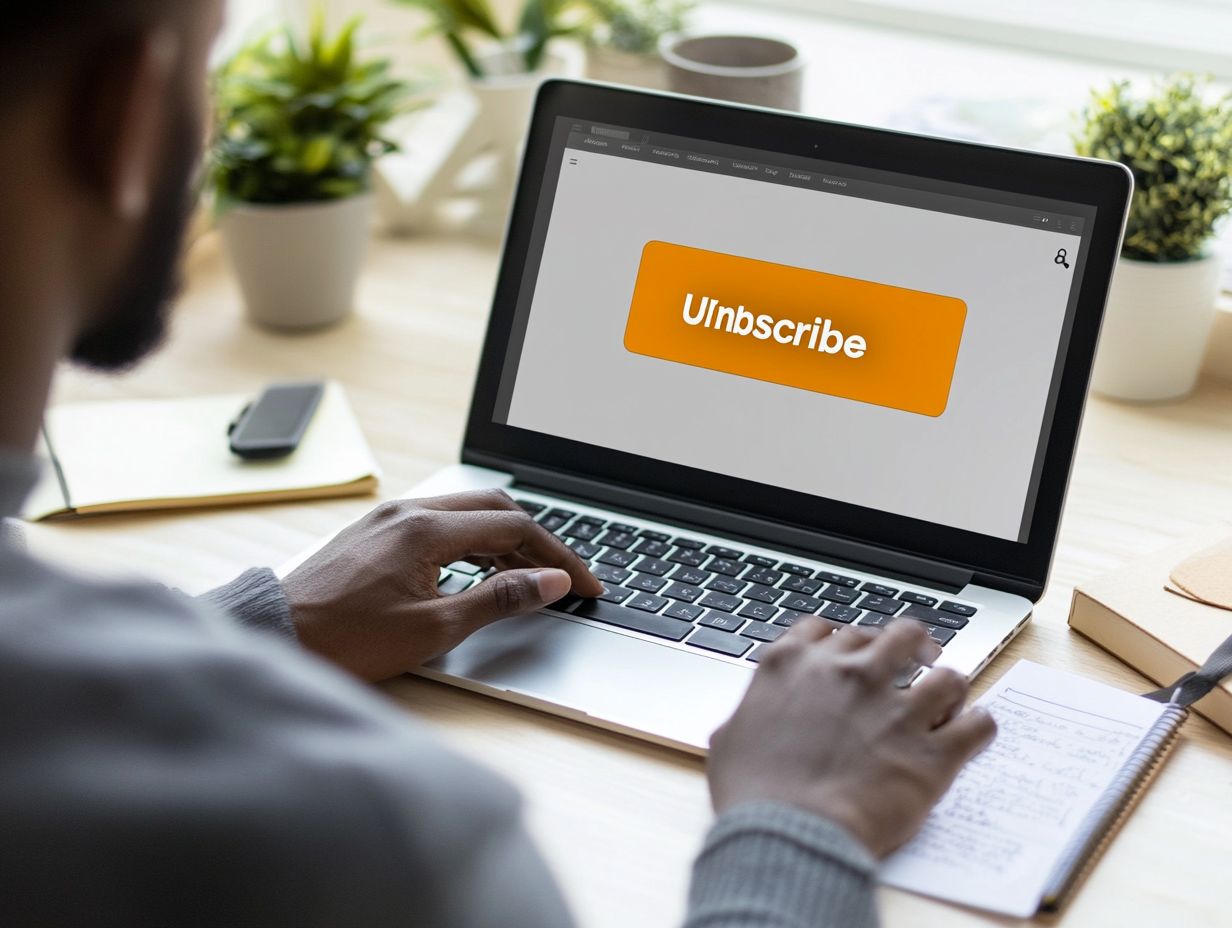
1. What is an email unsubscribe and why is it important to handle it?
An email unsubscribe is when a recipient of your marketing emails decides they no longer want to receive them and requests to be removed from your email list. Handling this properly is vital for maintaining a positive reputation and ensuring compliance with anti-spam laws.
2. How can I make it easy for recipients to unsubscribe from my emails?
Include a clear and visible unsubscribe link in all of your marketing emails. This allows recipients to easily find and click on the link to be removed from your email list.
3. Can I manually handle email unsubscribes?
Manually handling unsubscribes is risky and time-consuming. It’s best to use an email marketing platform that automatically handles unsubscribes for you.
4. What should I do if a recipient unsubscribes but continues to receive my emails?
If this happens, take immediate action and investigate the issue. Make sure the recipient has been properly unsubscribed from your email list, and if necessary, reach out to your email marketing platform for assistance.
5. Is it possible to re-subscribe a recipient who has previously unsubscribed?
Some email marketing platforms allow recipients to re-subscribe after they have unsubscribed. However, it’s essential to respect the recipient’s initial decision to unsubscribe and ensure they have actively opted back in to receive your emails.
6. How can I prevent high unsubscribe rates in the first place?
To prevent high unsubscribe rates, ensure your email content is relevant and valuable to your subscribers. Avoid sending too many emails and give recipients the option to manage their email preferences, such as choosing the frequency of emails they receive from you.

